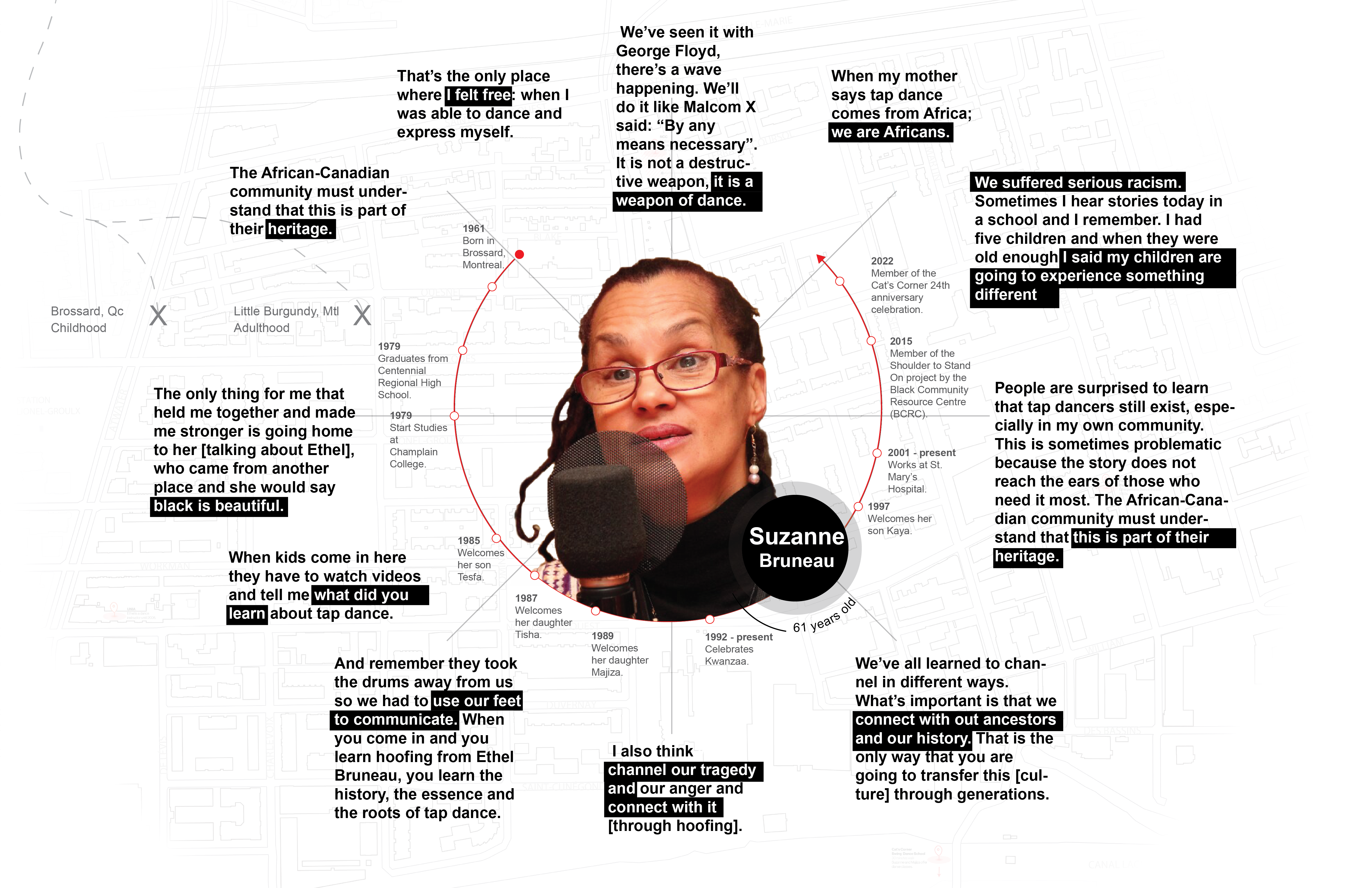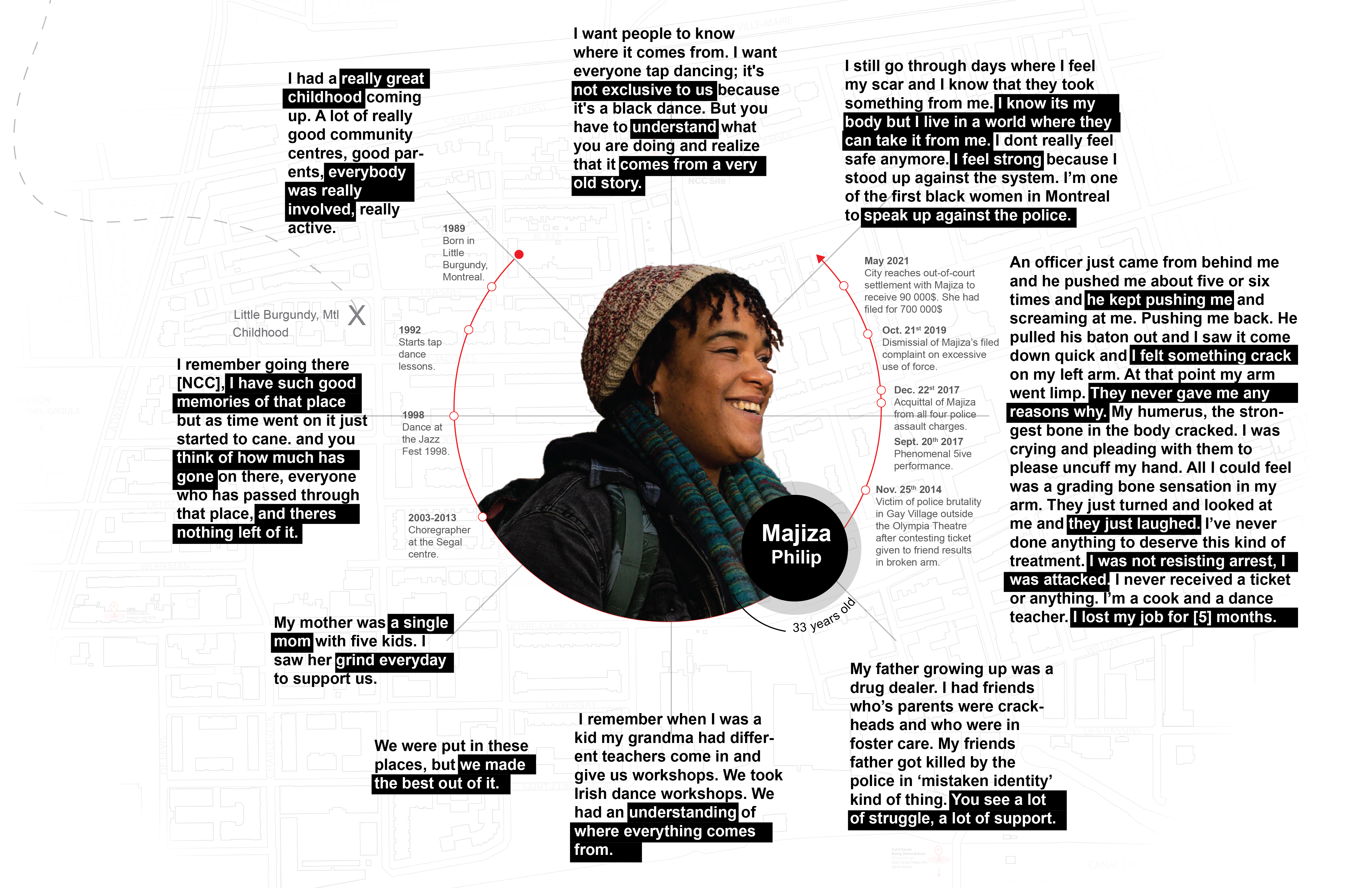The Bruneau, Philip, Llewellyn family
︎
Suzanne: ‘Me coming to the community and trying to connect them with their glorious past came out of my trauma. We suffered serious racism.’
Ethel: ‘I come from Harlem. Harlem people, that crap [racism] don’t get to you.’
Majiza: It’s also because you were around a lot of other black people. Mom grey up around a lot of white people.
Ethel: I never thought of that because
Majiza: Because you were surrounded by so many balck people.
︎
The Bruneau, Philip, Llewellyn family has been part of the Little Burgundy community since the arrival of Ethel Bruneau in 1953. You’ll come to discover through the following testimonies the importance of tap dance in the heritage of this family and the many meanings that hide in practicing ‘hoofing’.




︎
Ethel Bruneau has been and continues to remain active through a myriad of roles in the community, many of which relate to tap dancing. While building friendships, teaching, and performing, Ethel also strongly values and passes down the important generational values in tap dancing. She takes pride in her heritage and she plans on teaching no matter what challenges life brings on.
Figure 3: Biography of Ethel Bruneau
Suzanne Bruneau, Ethel’s eldest child and only daughter grew up in Brossard, Quebec. She recalls experiencing severe racism. Suzanne would turn to her mother and to tap dancing to affirm her identity as a black child. Like her mother, Suzanne continues to feel a deep connection to practicing and teaching tap dancing. She finds in this art a means of connection to her ancestors, healing her trauma and peacefully protesting against systemic racism.
Figure 4: Biography of Suzanne Bruneau
︎
Majiza Philip, daughter of Suzanne and granddaughter of Ethel grew up in Little Burgundy in the 1980s. She remembers attending a few community events at the NCC in her early childhood. Having Ethel and Suzanne as mentors, Majiza started tap dancing at the age of 3. She quickly learnt the multigenerational value found in hoofing. Having strong family ties and a strong sense of community shaped the woman she is today. After experiencing police brutality in 2014, Majiza still struggles with the mental and emotional challenges resulting from the violent attack. She nonetheless remain resilient and always strive to do more.
[Warning] Graphic description of police brutality experience.
Figure 5: Biography of Majiza Philip